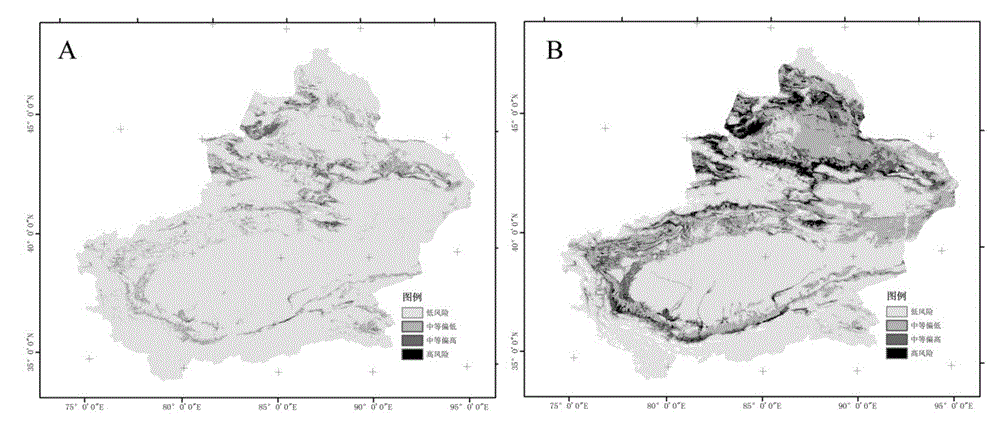Remote sensing technology-based grassland locust plague progressive prediction method
A forecasting method and remote sensing technology, which is applied in the fields of instrumentation, calculation, electrical and digital data processing, etc., and can solve the problems of difficult management department application, low forecasting accuracy, and lack of spatial positioning of forecasting results.
- Summary
- Abstract
- Description
- Claims
- Application Information
AI Technical Summary
Problems solved by technology
Method used
Image
Examples
Embodiment Construction
[0050] Below in conjunction with accompanying drawing, through embodiment, further illustrate the present invention, but do not limit the scope of the present invention in any way.
[0051] In this embodiment, taking the Xinjiang area where grassland locust plagues frequently occur as an example, the progressive locust disaster risk prediction method provided by the present invention is used to predict the risk of locust disasters.
[0052] Such as figure 1 As shown, according to the interaction relationship between grassland locust population development and habitat elements, the present invention divides locust population development into three stages: egg laying stage, hatching stage and growth stage, as the basis for building locust disaster risk prediction model. These three stages are the key to determining whether the locust population development can eventually constitute a disaster. Based on these three stages, remote sensing and geographic information system technol...
PUM
 Login to View More
Login to View More Abstract
Description
Claims
Application Information
 Login to View More
Login to View More - R&D
- Intellectual Property
- Life Sciences
- Materials
- Tech Scout
- Unparalleled Data Quality
- Higher Quality Content
- 60% Fewer Hallucinations
Browse by: Latest US Patents, China's latest patents, Technical Efficacy Thesaurus, Application Domain, Technology Topic, Popular Technical Reports.
© 2025 PatSnap. All rights reserved.Legal|Privacy policy|Modern Slavery Act Transparency Statement|Sitemap|About US| Contact US: help@patsnap.com



